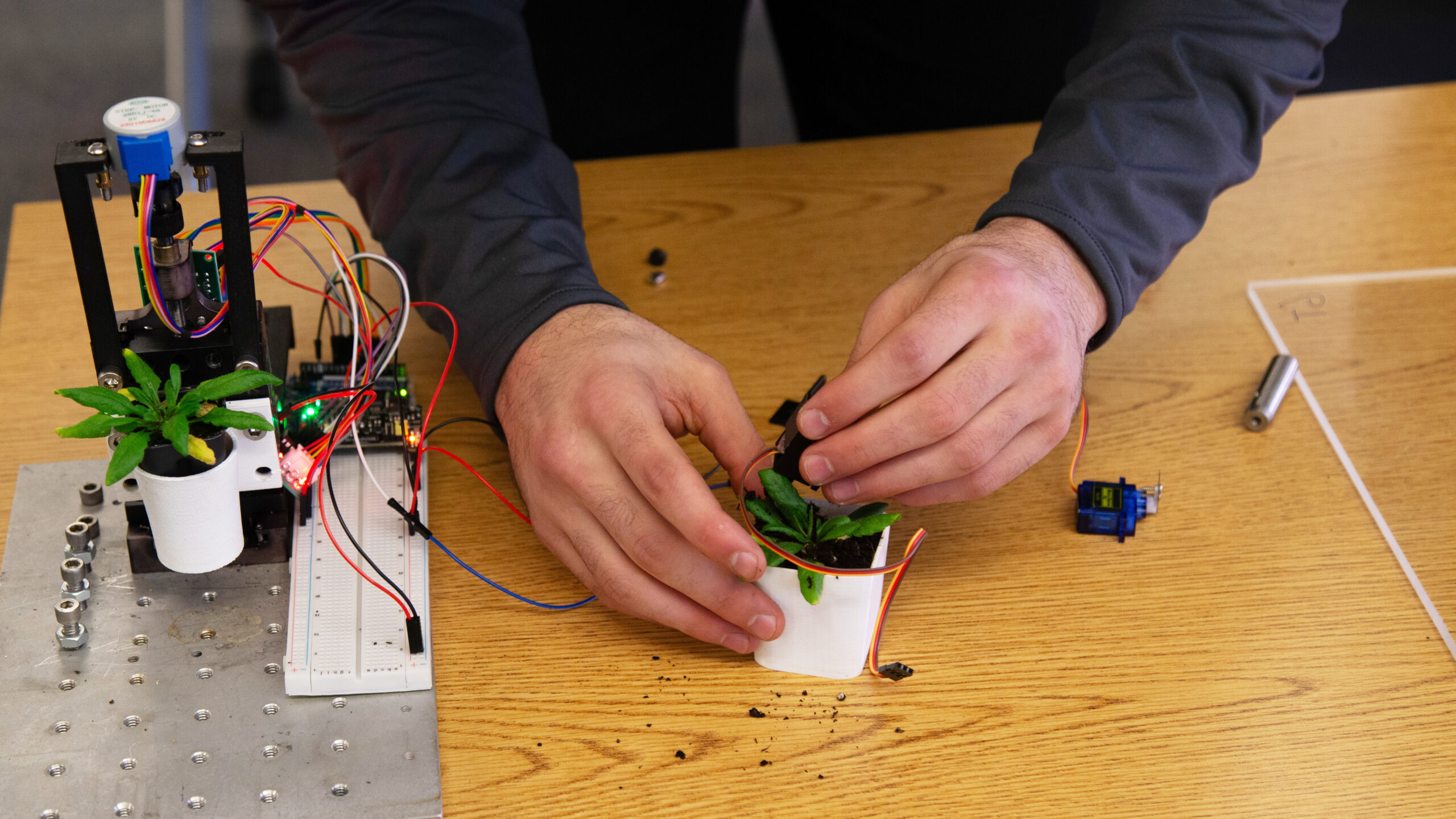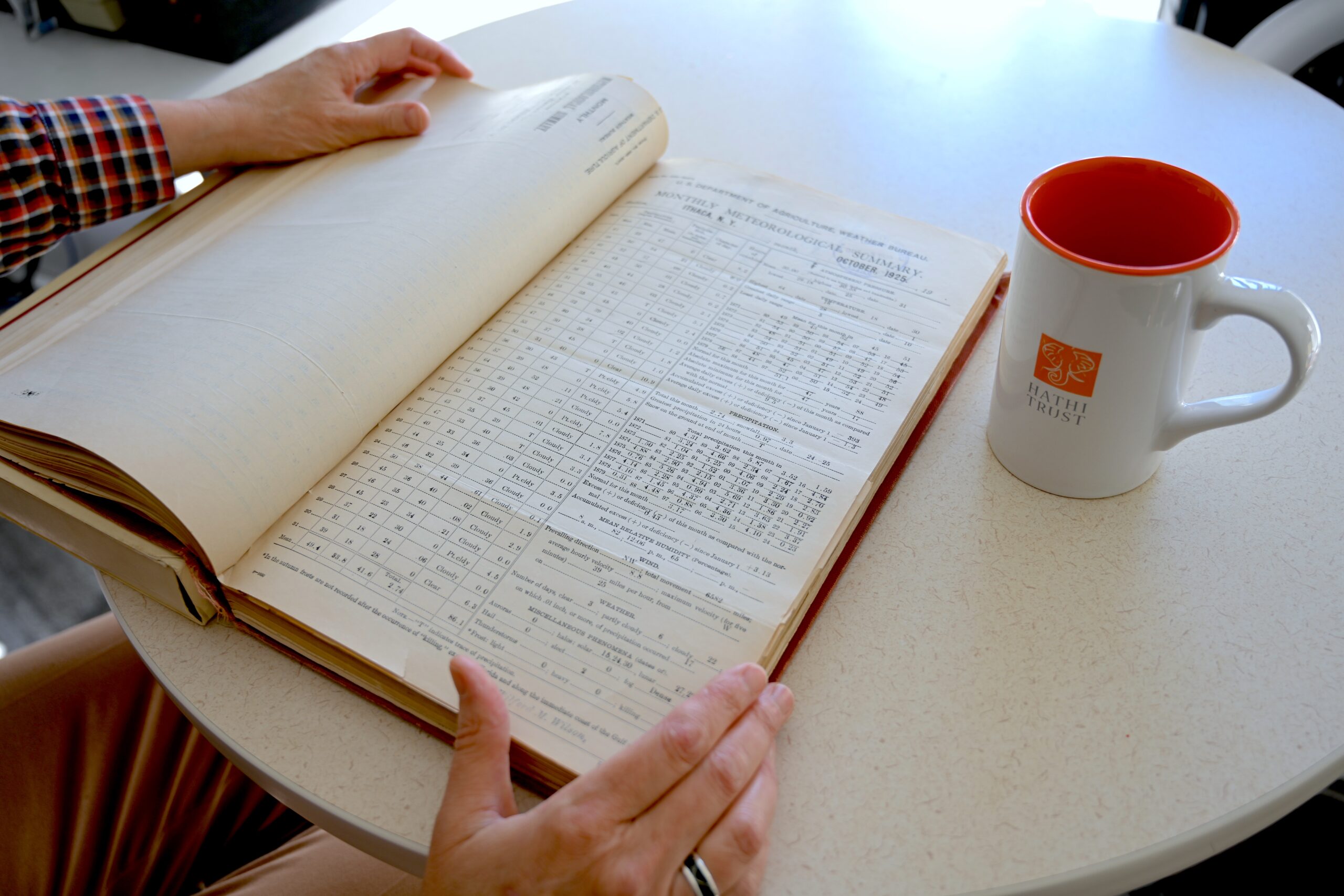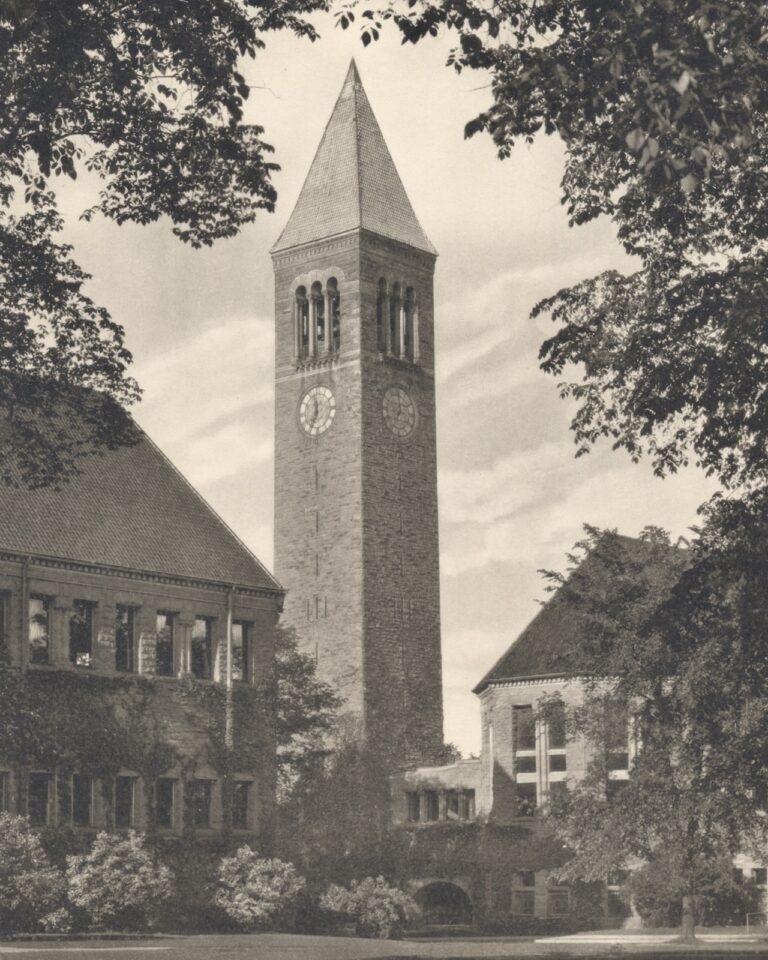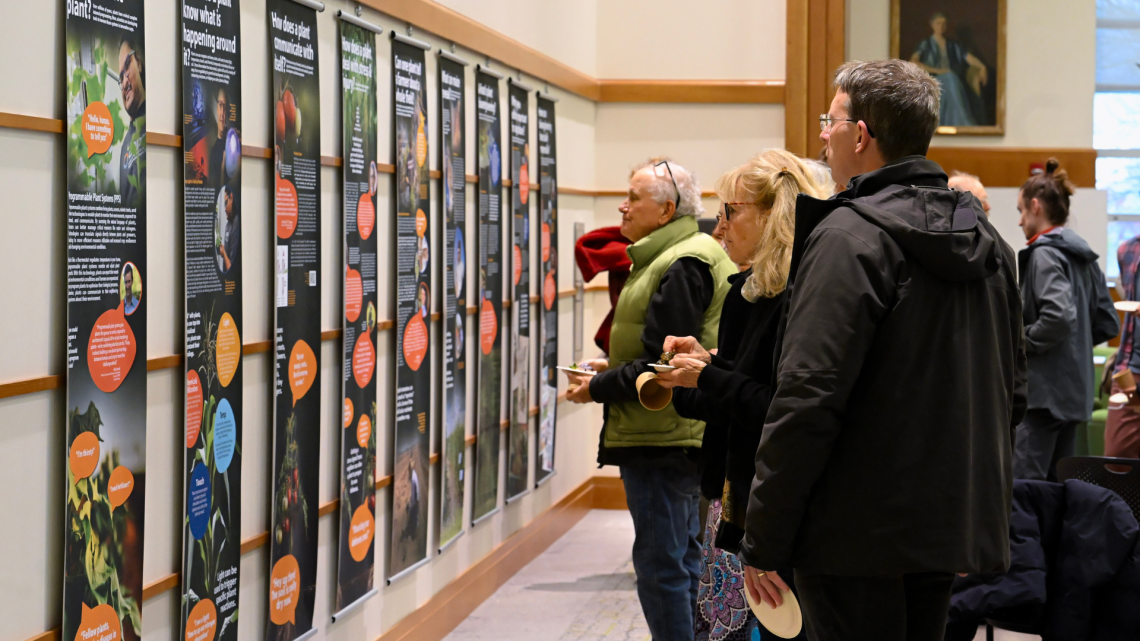
The opening of “Hello, Human! The Emerging Science of Plant Communication and Smart Agriculture” at Cornell’s Mann Library brought together researchers, students, and campus partners to showcase how plants communicate and how emerging technologies are helping humans better understand and respond to those signals to transform how crops grow, adapt, and thrive.
The exhibition, developed in collaboration between the Center for Research on Programmable Plant Systems (CROPPS) and Cornell University Library, showcases projects by CROPPS scientists at Cornell and other partner institutions, including Boyce Thompson Institute, Colorado State University, Tuskegee University, University of Arizona, and University of Illinois, Urbana-Champaign.
“This is the mission of the CROPPS Center – using technological innovation to program plants, allowing us to hear from plants and to talk back to them to improve our interactions with plants and agriculture,” said Marjolein van der Meulen, associate vice provost for Cornell Research & innovation and Swanson Professor of Biomedical Engineering in the Meinig School of Biomedical Engineering and the Sibley School of Mechanical and Aerospace Engineering at Cornell Engineering.
“When you browse this exhibit and see the demonstrations, you’ll understand that this research into programmable plant systems touches biology and agriculture as might be expected, but it also intersects with engineering, computer science, and other fields,” she said.
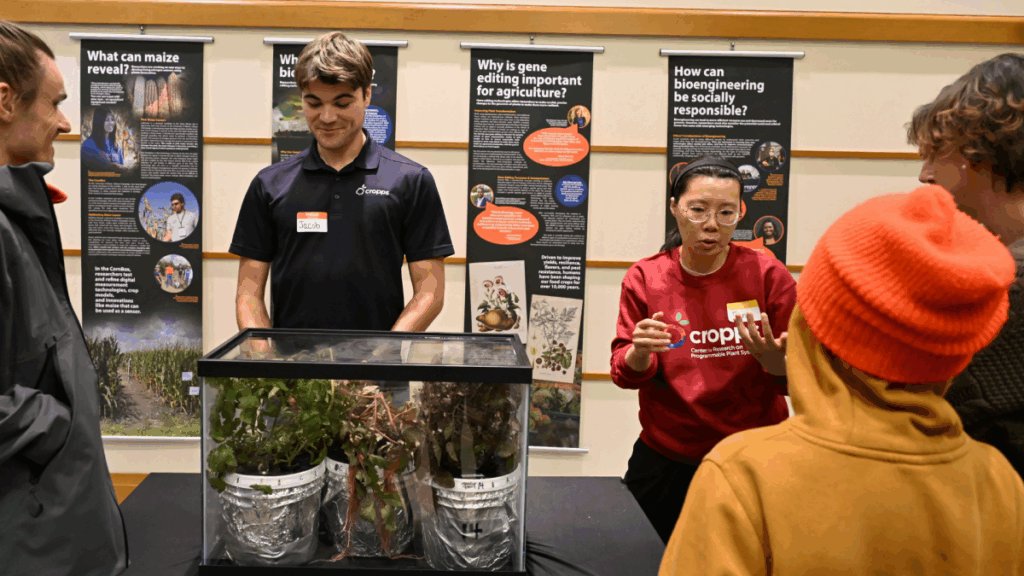
Attendees explored displays and demonstrations highlighting CROPPS’ research, including interactive systems that send and receive messages from plants, “living sensor” tomatoes that change color to indicate nutrient needs, and field-based imaging projects that capture plant health from above. The exhibit presented a rare, hands-on look at how programmable plant systems are being used to advance sustainable agriculture and more efficient resource use.
“For the past five years, we have been working together on a shared vision to tap into the living communication of the plant world with the goal of improving agricultural sustainability through enhanced resource management and program resilience.” Margaret Frank, co-principal investigator at CROPPS and associate professor at the School of Integrative Plant Science, Plant Biology Section within the College of Agricultural and Life Sciences.
“To me personally, this exhibit represents a tremendous milestone. It’s a synthesis of our vision for programmable communication and the associated hardware, software, and agricultural context to turn these dreams into a reality,” she said.
The event also underscored the importance of interdisciplinary collaboration at Cornell, with contributions from plant science, engineering, computer science, and social science, all working together making agriculture smarter, more efficient, and more sustainable, Frank said.
The exhibit further reflects CROPPS’ broader mission to connect scientific innovation with public understanding – transforming complex research into experiences that engage the campus community and spark curiosity about the future of agriculture.
“At CROPPS, we focus on communication, between people and plants and people and people. We invest in engagements like this to inform the public stakeholders and be informed by them,” said Abraham Stroock, principal investigator and director at CROPPS and the Gordon L. Dibble ’50 Professor in the Smith School of Chemical and Biomolecular Engineering in Cornell Engineering. “Translating the complex work of programmable plant systems into tangible experiences invites audiences to see firsthand how biology, technology and society intersect, inspiring learners and underscoring our commitment to a more sustainable, inclusive agricultural future.”
Co-curated by Anya Gruber, CROPPS public engagement specialist and Jenny Leijonhufvud, outreach space coordinator at Mann Library, the exhibit will run through March 2026 in the Mann Library Gallery on its second floor and is viewable during all library hours when open. For more information about CROPPS, visit cropps.cornell.edu.
This story was also published in the Cornell Chronicle.
